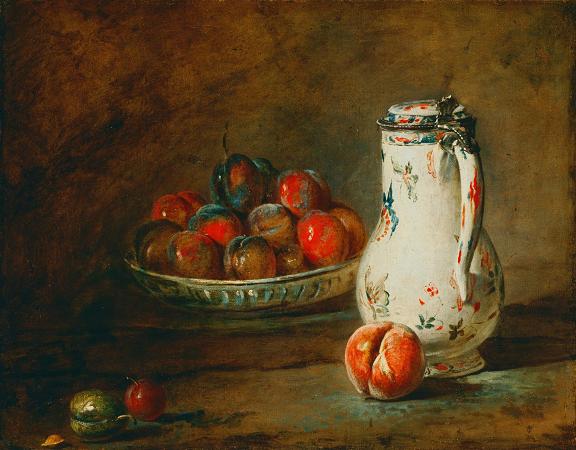
Plums. A plum is a fruit of the subgenus Prunus of the genus Prunus.
The subgenus is distinguished from other subgenera in the shoots having terminal bud and solitary side buds, the flowers in groups of one to five together on short stems, and the fruit having a groove running down one side and a smooth stone. Mature plum fruit may have a dusty-white waxy coating that gives them a glaucous appearance.
This is an epicuticular wax coating and is known as wax bloom. Dried plum fruits are called dried plums or prunes, although, in many countries, prunes are a distinct type of dried plum having a wrinkled appearance.
Plums may have been one of the first fruits domesticated by humans. Three of the most abundant cultivars are not found in the wild, only around human settlements: Prunus domestica has been traced to East European and Caucasian mountains, while Prunus salicina and Prunus simonii originated in Asia.
Plum remains have been found in Neolithic age archaeological sites along with olives, grapes and figs. The name plum derived from Old English plume or plum, plum tree, which extended from Germanic language or Middle Dutch, and Latin prunum, from Ancient Greek ῦ, believed to be a loanword from Asia Minor. In the late 18th century, the word, plum, was used to indicate something desirable, probably in reference to tasty fruit pieces in desserts. Plums are a diverse group of species. T
The subgenus is distinguished from other subgenera in the shoots having terminal bud and solitary side buds, the flowers in groups of one to five together on short stems, and the fruit having a groove running down one side and a smooth stone. Mature plum fruit may have a dusty-white waxy coating that gives them a glaucous appearance.
This is an epicuticular wax coating and is known as wax bloom. Dried plum fruits are called dried plums or prunes, although, in many countries, prunes are a distinct type of dried plum having a wrinkled appearance.
Plums may have been one of the first fruits domesticated by humans. Three of the most abundant cultivars are not found in the wild, only around human settlements: Prunus domestica has been traced to East European and Caucasian mountains, while Prunus salicina and Prunus simonii originated in Asia.
Plum remains have been found in Neolithic age archaeological sites along with olives, grapes and figs. The name plum derived from Old English plume or plum, plum tree, which extended from Germanic language or Middle Dutch, and Latin prunum, from Ancient Greek ῦ, believed to be a loanword from Asia Minor. In the late 18th century, the word, plum, was used to indicate something desirable, probably in reference to tasty fruit pieces in desserts. Plums are a diverse group of species. T
Wikipedia ...